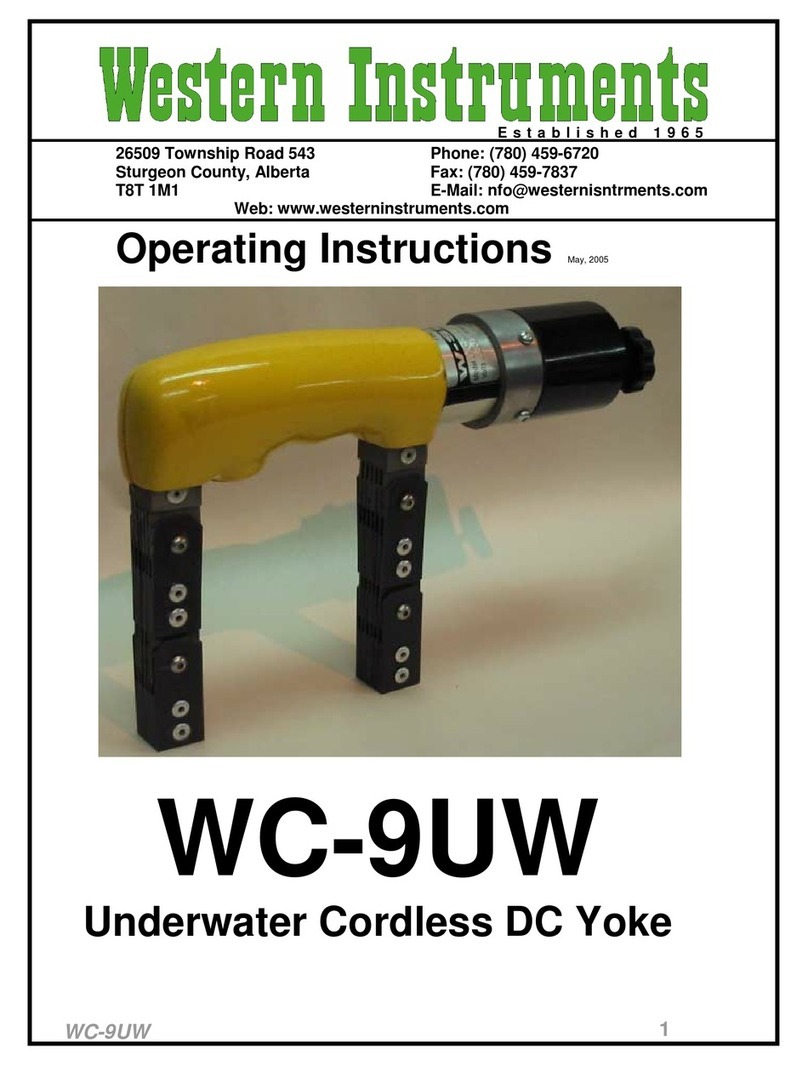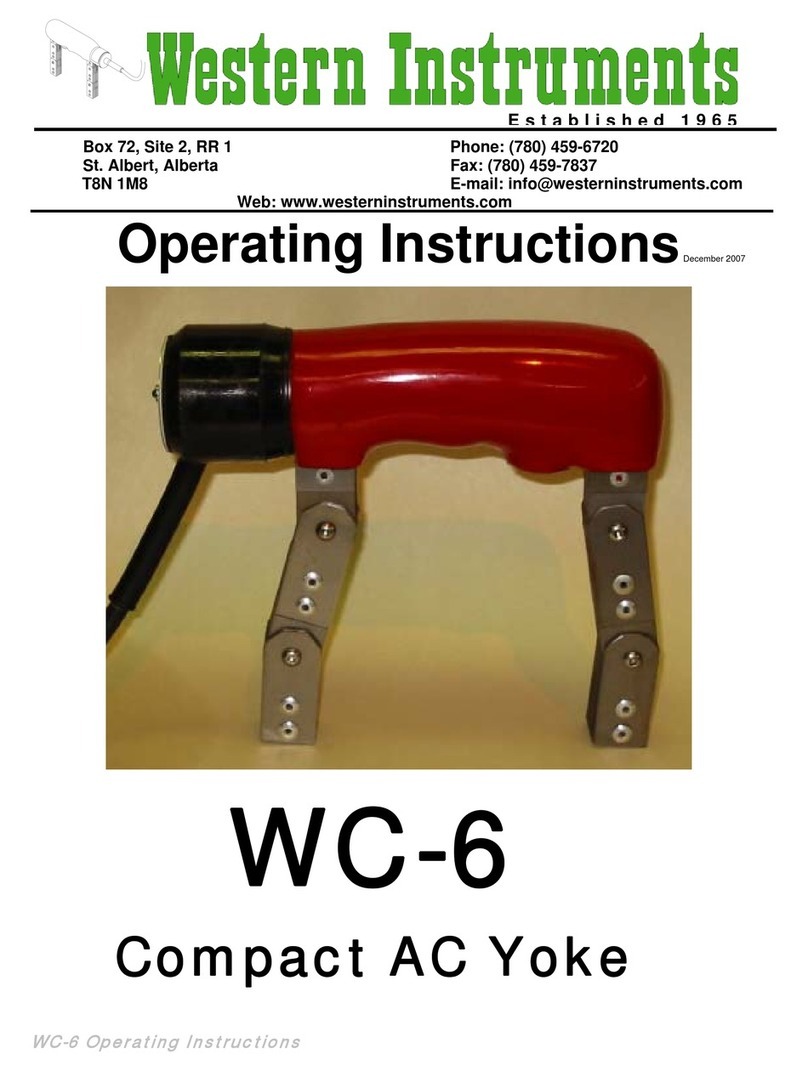
7. Maintenance
After extended use the Yoke should be cleaned with a mild soap solution and
thoroughly dried. The unit should be visually inspected for any damage that could
cause harm to the operator, or the material being inspected. Special attention should
be paid to the Push Button Switch Cover, to ensure it is fully inserted to the groove
cast in the Switch Cavity. The most frequent maintenance issue with any MPI Yoke
is the; Power Plug, Power Cord, and the End Cap/Cord Protector. Attention should
be paid when inspecting these items to ensure they appear in a good state of repair.
Before performing maintenance, cleaning, or repositioning the End Cap. The Yoke
should be disconnected from any power source, with safe industrial practices
employed. Our Web Site has write-up on many of the maintenance issues outlined
above. Any potential problems to these assemblies must be reported to the
Distributor or Western Instruments for instructions on corrective action.
Whether industrial specifications are being observed or not, the Yoke should be
tested periodically, using a certified Pull Test Bar such as the W-Series W-PT®, to
ensure it continues to lift the specified amount of weight. If the unit fails such a test,
first inspect the Pole Pieces to ensure they fully contact the test weight. If the unit
continues to fail, contact the Distributor or Western Instruments for instructions on
corrective action.
Wiring
Western Instruments publishes a Trouble Shooting Guide for WE-Series, and can be
requested by E-Mail upon request. WE-Series Yoke Frames are manufactured in 4
styles; the Standard Frame and the LT Frame, and both frames are available in 115
Volt, and 230 Volt. The Standard frames are black in color, and the LT Frames are
Orange. The only identification distinguishing 115 and 230 Volt frames, is from the
Serial Number; 230 Volt frames have a “K” at the end. As an example, a 230 Volt
frame might have a Serial Number 3490EK, while a 115 Volt unit would be 3490E.
Serial Numbers are indicated on the name plates, but also are stamped onto the
Legs, where they protrude form the casting.
W-Series 230 Volt Models, are designated by a “K” placed after the Serial Number
and the Model number (e.g. WC-6K), are shipped without an AC Power Plug as there
is no international standardization. When installing an AC Power Plug onto the AWG
18-3 Power Cord, the following is the identity of the 3 Color Coded Conductors;
•Green – Ground
•White - Neutral
•Black – Live
Care must be taken to insure the proper installation of an AC Power Plug, and if there
is any question, contact your distributor or Western Instruments. If an AC Plug in not
installed before use, any warranty is void.
8. Pull Test / Calibration
When performing a 10 Pound (4.6Kg) Pull Test, ensure the contact feet are flat as
possible to the Pull Test Bar (W-PT®), which ensures as much magnetic attraction as
possible. While not particularly important on Full Size Yokes (WE-3 & HD units), it is
very necessary on the WE-3LT due to the flexibility of the Pole Pieces. If a Yoke fails
a pull test, it should be sent to an authorized repair facility for Contact Foot Dressing.
WE-Series Operating Instructions
5

























